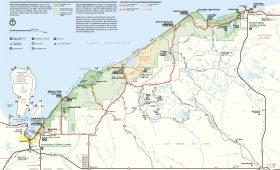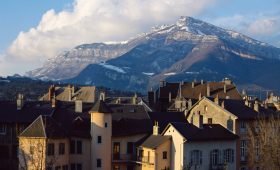Exploring Laguna del Maule
Laguna del Maule is a fascinating volcanic field straddling the Chilean-Argentine border, primarily located in Chile’s Maule Region. This area is known for its dramatic landscapes, shaped by volcanic activity and glacial history. It offers a unique experience for those interested in geology, outdoor adventures, and cultural exploration.
Natural Beauty and Volcanic Activity
The Laguna del Maule volcanic field covers approximately 500 square kilometers and features over 130 volcanic vents, including cones, lava domes, and shield volcanoes. The lake itself is situated at an altitude of 2,160 meters, with a depth of 50 meters, making it Chile’s fourth-largest reservoir. The surrounding mountains reach altitudes of up to 3,900 meters, providing a stunning backdrop to the lake’s crystal-clear waters.
This region is geologically active, with several active volcanoes contributing to its dynamic landscape. The volcanic activity has left behind a variety of geological formations, including the Domo del Maule lava dome and the well-preserved Colada de las Nieblas lava flow. These features offer a glimpse into the powerful forces that have shaped the Andes over millennia.
Outdoor Activities
For outdoor enthusiasts, Laguna del Maule offers a range of activities. Hiking trails wind through the volcanic terrain, providing opportunities to explore the area’s unique geology and stunning vistas. Fishing is popular in the lake, with trout being a common catch. The region’s rugged landscape also makes it suitable for horseback riding and mountain biking, though visitors should be prepared for challenging conditions.
Cultural Insights and Nearby Towns
While the natural beauty of Laguna del Maule is a major draw, the cultural aspects of the region should not be overlooked. The local communities maintain their traditions, offering visitors a chance to learn about Chilean culture firsthand. Interacting with locals can provide valuable insights into their way of life and the history of the area.
Exploring San Clemente
San Clemente, a nearby town, is worth a visit for its colonial architecture and warm hospitality. Strolling through its narrow streets, visiting local markets, and sampling traditional Chilean cuisine can enrich your understanding of the region’s cultural heritage.
When to Visit
The best time to visit Laguna del Maule depends on your interests. The summer months (December to February) offer mild weather ideal for hiking and exploring the outdoors. Winter (June to August) brings snow, creating opportunities for winter sports like skiing and snowboarding. However, the region’s remote location and seasonal road closures can pose challenges, so plan accordingly.
Getting There
Laguna del Maule is accessible from Santiago International Airport, the nearest major airport. From Santiago, the journey to the lake takes about 4-5 hours by road. Renting a car is recommended for flexibility, as public transportation options are limited. The seasonal Highway 115 passes through the northern part of the volcanic field, and the Paso Pehuenche mountain pass connects Chile and Argentina, making cross-border travel possible.
Local Transportation
Having your own transportation is crucial for exploring Laguna del Maule and its surroundings. The area’s sparse population and limited infrastructure mean that renting a car or hiring a local guide is the most practical way to navigate the region. A guide can also provide valuable insights into the area’s geology and history.
Laguna del Maule offers a unique blend of natural wonders and cultural experiences. While its remote location and challenging terrain require careful planning, the rewards are well worth the effort for those seeking adventure and discovery in one of Chile’s most intriguing landscapes.




